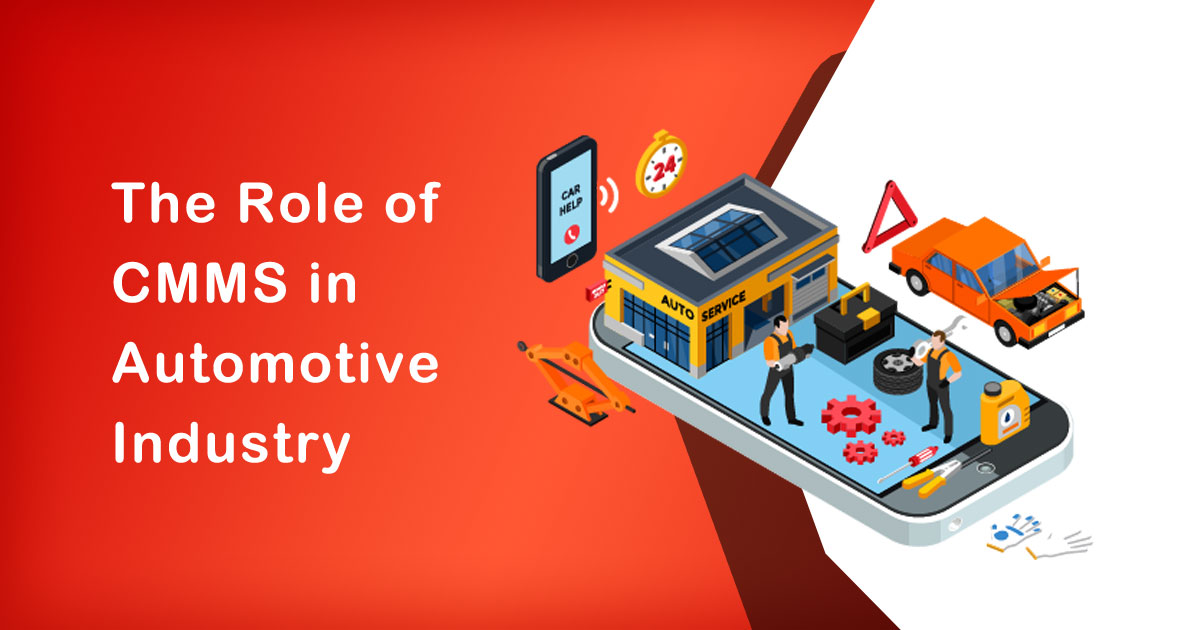Introduction
The automotive industry is a complex and dynamic sector that relies heavily on efficient maintenance and management practices to ensure optimal performance and customer satisfaction. In this digital age, Computerized Maintenance Management Systems (CMMS) have emerged as invaluable tools for streamlining maintenance processes, enhancing productivity, and reducing costs. In this article, we will explore the role of CMMS in the automotive industry, focusing on its benefits, implementation challenges, and its significance in the Indian context.
What is CMMS?
A Computerized Maintenance Management System (CMMS) is a software-based solution designed to help organizations effectively manage their maintenance operations. It provides a centralized platform for organizing, scheduling, and tracking maintenance activities, including preventive maintenance, work orders, asset management, inventory control, and equipment history. CMMS enables automotive manufacturers and service providers to streamline their maintenance processes, improve equipment uptime, and extend the lifespan of critical assets.
Benefits of CMMS in the Automotive Industry
1 Enhanced Maintenance Planning and Scheduling
One of the key advantages of CMMS is its ability to facilitate efficient maintenance planning and scheduling. CMMS software allows automotive companies to schedule routine maintenance tasks, track work orders, and allocate resources effectively. By implementing preventive maintenance strategies, organizations can minimize unexpected breakdowns, optimize equipment performance, and reduce downtime. This proactive approach helps in avoiding costly repairs and ensures the smooth functioning of manufacturing processes.
2 Improved Asset Management
In the automotive industry, managing a vast array of assets such as production machinery, tools, and vehicles is critical. CMMS simplifies asset management by providing real-time visibility into asset performance, maintenance history, and lifecycle costs. By tracking asset data, organizations can make informed decisions regarding maintenance, repair, and replacement. This helps in maximizing asset utilization, minimizing inventory costs, and improving overall operational efficiency.
3 Efficient Inventory Control
Inventory management is a significant concern in the automotive industry, as timely availability of spare parts is crucial for maintenance and repair activities. CMMS enables effective inventory control by providing accurate information about spare part usage, stock levels, and reorder points. With CMMS, automotive companies can streamline procurement processes, reduce stockouts, and eliminate excess inventory, resulting in cost savings and improved maintenance operations.
4 Compliance and Safety
The automotive industry is subject to various regulatory standards and safety requirements. CMMS helps organizations ensure compliance by providing documentation and proof of maintenance activities. It allows for the systematic tracking of inspections, audits, and maintenance tasks, ensuring that equipment meets safety standards and regulations. By maintaining a comprehensive record of maintenance activities, CMMS enables organizations to demonstrate compliance during audits and inspections.
Implementation Challenges
While CMMS offers numerous benefits, its successful implementation in the automotive industry requires careful planning and overcoming certain challenges. Some common implementation challenges include:
1 Data Integration
Integrating CMMS with existing systems, such as Enterprise Resource Planning (ERP) and Supervisory Control and Data Acquisition (SCADA) systems, can be complex. It requires aligning data formats, establishing data exchange protocols, and ensuring seamless communication between different systems. Overcoming these challenges is essential for achieving effective data integration and deriving accurate insights for decision-making.
2 User Adoption and Training
Introducing a new system like CMMS necessitates user adoption and training. Employees need to be trained on how to use the software effectively and understand its benefits. Resistance to change and lack of training can hinder the successful implementation of CMMS. Organizations should invest in comprehensive training programs and change management strategies to overcome these challenges and ensure widespread adoption.
Significance of CMMS in the Indian Context
In India, the automotive industry is a crucial sector that contributes significantly to the country’s economic growth. With the increasing adoption of automation and digital technologies in the industry, the role of CMMS becomes even more relevant. CMMS offers Indian automotive companies several benefits, such as improved maintenance efficiency, reduced downtime, and enhanced asset management. By embracing CMMS, Indian automotive manufacturers can optimize their operations, meet rising customer expectations, and maintain a competitive edge in the global market.
Conclusion
Computerized Maintenance Management Systems (CMMS) play a vital role in the automotive industry by optimizing maintenance processes, improving asset management, and enhancing overall operational efficiency. By leveraging CMMS, automotive companies can plan and schedule maintenance effectively, streamline inventory control, ensure compliance, and maximize the lifespan of critical assets. While implementing CMMS may pose challenges, its benefits outweigh the initial obstacles. In the Indian context, CMMS holds immense significance for the automotive industry, empowering manufacturers to adapt to the changing landscape and achieve sustainable growth in a highly competitive market.








